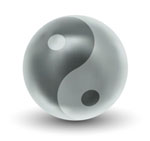Coral Springs, Florida – According to the National Institute of Health, Uterine Fibroids, also called leiomyomas or myomas, affect 70-80% of women by age 50 and account for more than 200,000 hysterectomies per year. They are benign, non-cancerous, growths in or on the wall of the uterus, usually occurring in women ages 35-45.
The symptoms of fibroids range from no symptoms to debilitating abdominal pain, excess bleeding, urinary frequency and retention, painful intercourse, constipation, and even infertility. These tumors can range in size from the size of a seed to the size of a cantaloupe, and usually shrink after menopause. Confirmation of a fibroid diagnosis is made with an ultrasound and often a biopsy to rule out cancer.
Conventional Western treatments include artificial hormone therapy, traditional, ultrasound or laser surgery, and hysterectomies. Up tp 20% of the time, the fibroids removed by surgery grow back. Yet, Traditional Chinese Medicine (TCM) has been treating fibroids for thousands of years with good success.
History of Fibroids and TCM
The mention of fibroids in Ancient Chinese medical texts goes all the way back to the Huang Di Nei Jing, or the Yellow Emperor’s Classic of Internal Medicine, volume called Ling Shu, written in 100 B.C. It describes fibroids as “shi-jia” or “stone masses”, and are later described as abdominal masses or lumps. They are categorized as blood stasis masses with a fixed location and form or Qi masses without a fixed location or solid form. Both kinds of masses can be treated with acupuncture and herbs to reduce the fibroid size and accompanying symptoms, even possibly shrinking them completely.
TCM Patterns for Fibroids
What is most important in TCM is to identify the underlying pattern or root cause of the fibroids. In all cases, there is an underlying weakness in the body which precipitates or allows the formation of the fibroids. These weaknesses can be caused by emotional factors such as stress or anger, improper diet, or external influences that remain in the body that collect in the abdomen. Uterine fibroids can often be categorized as one of the following:
- Spleen Qi Deficiency with Liver Qi Stagnation causing Phlegm or Damp Accumulation – Along with the fibroid symptoms above, there may also be a mix of the following: pain or fullness in the lower rib cage or lower abdomen, digestive problems such as bloating, gas, and loose stools, emotional stress or anger, a feeling of being heavy, excess sighing, and a sticky white tongue coating with a wiry or soggy pulse.
- Qi and Blood Stagnation – The fibroids have a fixed, stabbing pain, worse with pressure, and menstruation may be prolonged and include clots. The pulse may be thin and choppy or deep and wiry, and the tongue will have purple spots with a dark red color. Eventually, symptoms will progress to include poor appetite, and sallow or gray complexion.
- Yin Deficiency with Heat – There may be multiple small fibroids with more of a burning pain and heat sensations in the palms, feet, and chest. Menstruation will be irregular, usually in excess, and accompanied by breast distention with itching or burning. The pulse will be thin and rapid, and the tongue would be red with little or no tongue coating.
Herbs and Formulas for Uterine Fibroids
There are several herbal formulas used to treat fibroids in TCM. The hallmark formula is Gui Zhi Fu Ling Wan (Cinnamon Twig and Poria Pill). This formula is best for removing blood stasis in the abdomen, especially for masses, with the added effect of reducing pain. If symptoms of internal cold accompany the blood stasis, Shao Fu Zhu Yu Tang may also be used. For Spleen Qi Deficiency and Liver Qi stagnation pattern fibroids, Xiao Yao San can be used. With a combination of patterns, Dang Gui Shao Yao San may be used to invigorate blood, strengthen the spleen and resolve the phlegm or dampness. Lastly, for Yin Deficiency with Heat pattern fibroids, Zhi Bai Di Huang Wan is a classic to nourish Yin and clear heat in the abdomen.
There are also two important single herbs in the treatment of uterine fibroids. San Leng (Rhizoma Sparganii) is used to treat uterine fibroids, infertility due to endometriosis, as well as swelling of tonsils and tumors, etc… San Leng powder extract has also been used as medicinal compound for the prevention and treatment of cancers. The anti-tumor activity of San Leng was studied in mice harboring a human uterine cancer and treated with the extract for 17 days. The results indicated that the inhibition of tumor growth by San Leng extract was likely due to a block in the cell cycle and the induction of apoptosis, or cell death. These results suggest that San Leng might be useful in the treatment of cancer and fibroids in the uterus.
E Zhu (rhizome of curcuma), another powerful herb in “dissolving blood stasis” in Chinese herbal medicine, is widely used in China for its anti-cancer and anti-tumor properties. The active substance called curcumin is a potent inhibitor of mutagenesis and tumor promotion. San Leng and E Zhu not only inhibit the number of tumors but also reduce tumor size. Together, San Leng and Er Zhu are combined in clinical practice for an even stronger effect.
Conclusion
Acupuncture and food therapy can be used in conjunction with herbal formulas to increase the effectiveness. Also, diet, exercise, and lifestyle changes may be necessary to reduce and prevent uterine fibroids. Any herbs or recommendations for diet and exercise changes should come from a qualified Oriental Medicine physician. By properly applying the principles of TCM, many women have found healing and help for their uterine fibroid symptoms. Our wellness center serves the communities of Margate, Coral Springs, Coconut Creek, Tamarac and Parkland Florida. We offer free consultations daily.
Works Cited
- Dharmananda, Subhuti. “Chinese Herbal Therapy for Uterine Fibroids.” Institute for Traditional Medicine, ITMonline, Sept. 2003, www.itmonline.org/arts/fibroids.htm.
- Huang, Kee Chang. The Pharmacology of Chinese Herbs. 2nd Edition ed., CRC Press, 1999.
- Nagel, Joan. “NIH Fact Sheets – Uterine Fibroids.” National Institutes of Health, U.S. Department of Health and Human Services, 30 June 2018, report.nih.gov/nihfactsheets/ViewFactSheet.aspx?csid=50.
- Treating Uterine Fibroids with TCM. Acupuncture & Wellness Center, LLC, 2011, www.mandevilleacupuncture.com/tcm/conditions/gynecology/fibroids.html.
- Zheng, Li, and Sara Allen. Acupuncture & Infertility. Lulu, 2018.

